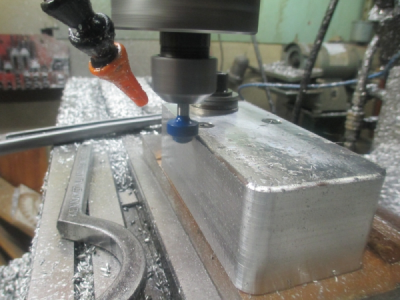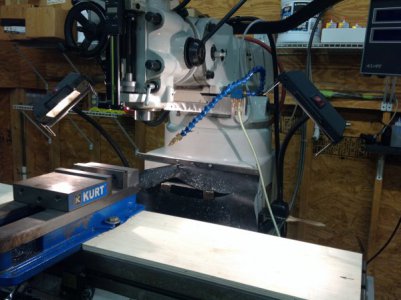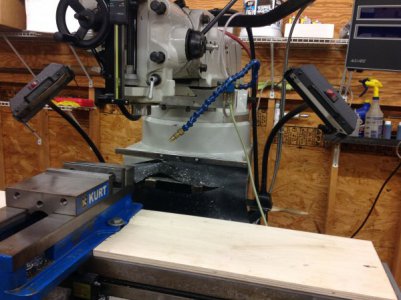I don't have a roundover mill bit. I want to put a roundover on some sharp edges in acrylic and aluminum. I do have ¼" shank carbide router bits including a roundover profile that I bought for woodworking some years ago. I expect they are fine for acrylic; any reason not to use them for a few corners on 0.25" 6061T651 aluminum plate as well?
I did put nice edges on the acrylic using polished ground SEHT inserts in a 45⁰ endmill. I had been wondering how I would do that. I had six .22" sheets, which I stacked together in my vise, and then clamped together near the top edge that I was milling, and had no problems with chattering. It left me with a reasonably optically clear edge. I expect to stack them the same way to round over the corners, and I'm hoping for a matching edge surface when I do that.
On the other hand, I'll be cleaning the acrylic flakes out of random crevices of the mill and nearby areas of the shop for the rest of my life. And I'm sure it will only get worse when I round over the corners!
I did put nice edges on the acrylic using polished ground SEHT inserts in a 45⁰ endmill. I had been wondering how I would do that. I had six .22" sheets, which I stacked together in my vise, and then clamped together near the top edge that I was milling, and had no problems with chattering. It left me with a reasonably optically clear edge. I expect to stack them the same way to round over the corners, and I'm hoping for a matching edge surface when I do that.
On the other hand, I'll be cleaning the acrylic flakes out of random crevices of the mill and nearby areas of the shop for the rest of my life. And I'm sure it will only get worse when I round over the corners!





